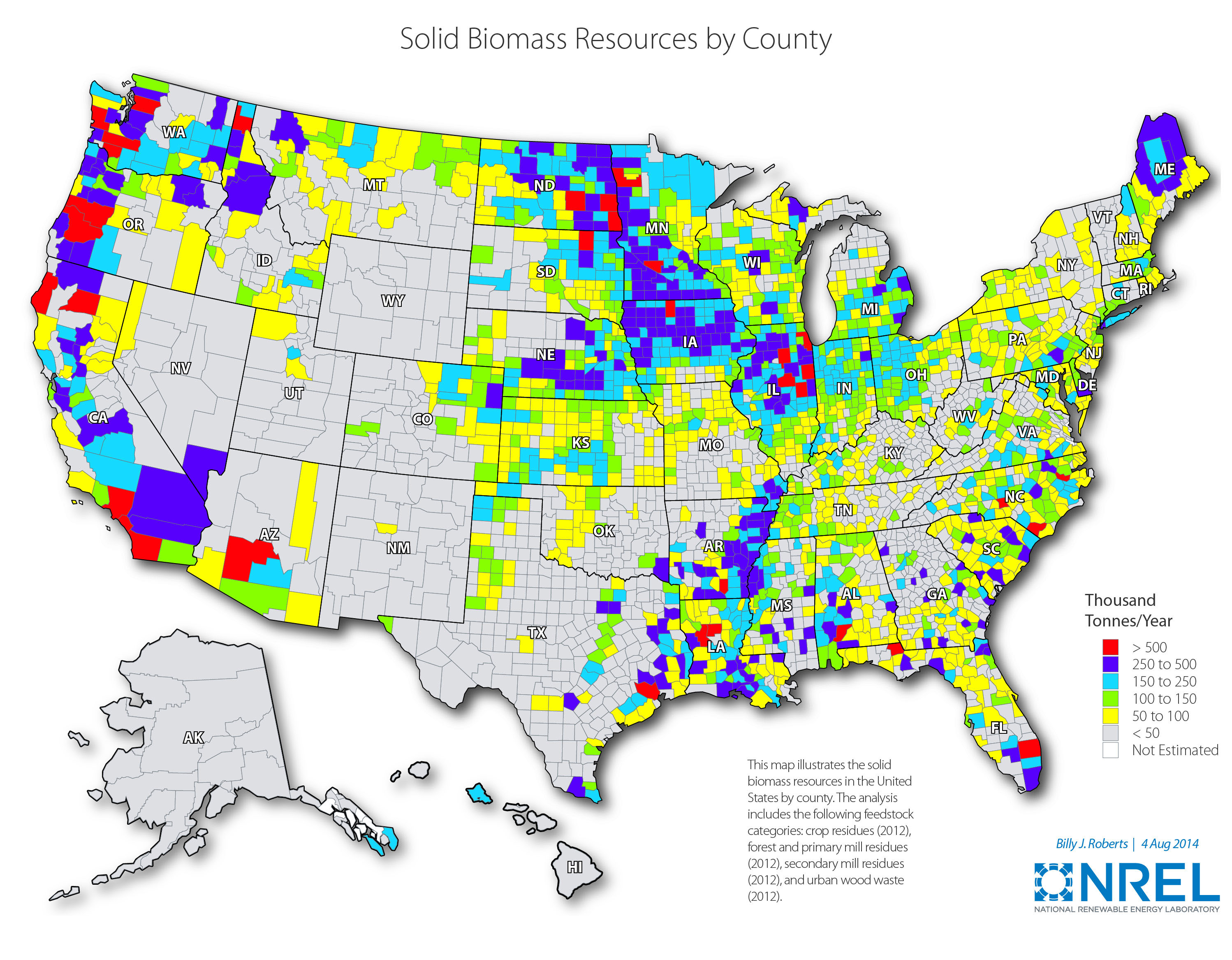Biomass
Biomass is biological matter that can be used as fuel or for industrial production, and it makes a major contribution to the nation’s renewable energy portfolio. Although the term is perhaps most familiar in the context of corn ethanol that is added to gasoline, biomass has many applications. In 2015, wood and waste biomass supplied about 26% of all U.S. energy consumption from renewable sources and generated 1.6% of America’s electricity.
Wood, which makes up about half of all biomass employed for energy, has been used by people for thousands of years to cook food and to keep warm. Grasses, agricultural crops (such as corn and sugar cane), landfill waste, and manure are other examples of biomass. Used for a variety of purposes, biomass provides energy to produce electricity, heat, chemicals, and transportation fuels (biofuels). It makes small contributions to each of the economic sectors, but the majority of this energy source goes to industry.
The U.S. Energy Information Administration projects biomass generation to grow at an average of 4.3% per year through 2040—more than doubling current rates—chiefly because of its increased use as a “co-firing” source along with coal in electrical power plants.
Burning biomass releases about the same amount of carbon dioxide (CO2) as burning fossil fuels. However, biomass is more sustainable than fossil fuels because the CO2 it releases is balanced by the CO2 absorbed in plant growth. Any fossil energy that is used to grow, harvest, and process fuel from biomass releases some of that net CO2; but overall, burning biomass contributes significantly less to climate change than fossil fuels. In fact, if a biomass power plant was equipped to capture the CO2 it generates and store it underground, as has been proposed for coal-fired power plants, it could be a net absorber of CO2.
Biomass is more sustainable than fossil fuels because the CO2 it releases is balanced by the CO2 absorbed in plant growth.
In addition, if the requisite technologies can be developed, converting biomass and coal to liquid fuels could provide the equivalent of 2.5 million barrels of gasoline per day within a few decades.
Despite this hopeful picture, it is important to take into account the effect of converting intact ecosystems (such as forests, peatlands, savannas, or grasslands) to grain or fuel crop production. The resulting release of biomass and soil carbon to the atmosphere in the form of CO2 may greatly exceed the greenhouse gas (GHG) savings associated with biofuel production on such lands for many years. This phenomenon is referred to as a “carbon debt.” In addition, growing crops for biofuel requires substantial amounts of water from already stressed aquifers and surface sources, and it can adversely impact the surrounding environment.
Much more research needs to be done on the use of biomass as a source of fuel, but there is promise that it will reduce our nation’s dependence on fossil fuels and decrease the emission of GHGs.
Source Material
- Electricity from Renewable Resources: Status, Prospects, and Impediments (2010)
- Overview and Summary of America’s Energy Future: Technology and Transformation (2010)
- The Power of Renewables: Opportunities and Challenges for China and the United States (2010)
- Hidden Costs of Energy: Unpriced Consequences of Energy Production and Use (2010)
- Liquid Transportation Fuels from Coal and Biomass: Technological Status, Costs, and Environmental Impacts (2009)

